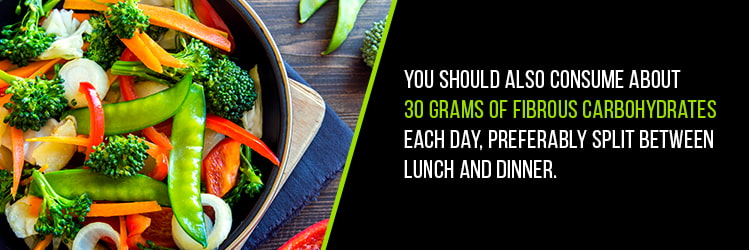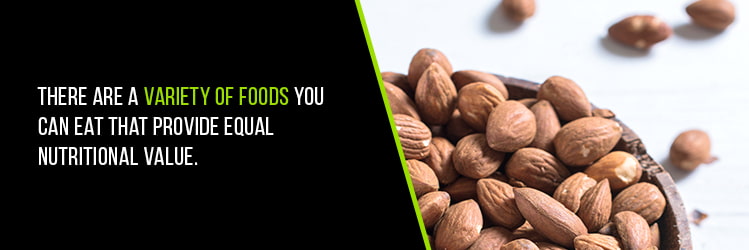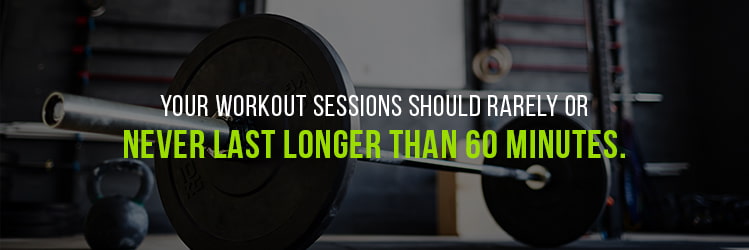Nutrition, Lifting, And Healthy Diet Plans For Football Players
12/2/2020

Subscribe to the Blog
Stay up to date
The life of an athlete is full of challenges. Not only must you practice and train seemingly endless hours to perfect your craft and your sport, but you also have to worry about your body. Unlike so many other professions, hobbies and pastimes, the state of your body has a very real and immediate effect on your ability to play a sport.

If athletes don’t work hard to stay in peak physical condition, it often won’t matter how skilled or knowledgeable they are. If they aren’t strong, fast and healthy, their body simply won’t be able to keep up with the demands of the sport. This is true in every sport — from basketball to hockey, gymnastics, wrestling and of course, football.
Because of this, it’s imperative for athletes such as football players to gain an intimate knowledge of how to care for their bodies. They need to know about nutrition, exercise, weight gain and loss and a whole host of other elements.
While it takes a lot of learning and study to become a true expert in these areas, we know it’s important to start somewhere. That’s why we’ve put together a starter guide to a healthy diet, weight gain and nutrition for football. After reading, you should have a better sense of the landscape of sports health and nutrition and feel more equipped to go out and keep learning.
What Is a Healthy Diet for Football?

It’s important to remember a healthy diet for a football player will be different than it will be for many other people. While the basic principles of good eating remain the same, the emphasis is different. For example, healthy eating for a person trying to lose weight is different than it is for a football player, whose goal is typically to add muscle and bulk. Even among athletes in different disciplines, the goals are different. Where a football player seeks to gain weight, athletes such as ballet dancers eat to gain muscle and strength, but also to keep weight off.
With that said, keep in mind that this guide is intended to provide tips on how to gain weight for football through eating.
How to Gain Weight and Muscle by Eating
Before we begin to talk about specific foods and meal plans, let’s discuss some general rules for gaining weight and healthy dieting.
1. Don’t Just Eat Everything in Sight
When you think about gaining weight, your first instinct may just be to begin eating everything haphazardly, in hopes it will help you bulk up. You’ll certainly gain weight this way, but it won’t be the right kind of weight.

Instead of eating two or three large meals a day, instead try to spread your caloric intake out over multiple, smaller meals throughout the day. And instead of eating without discretion, focus on calorie-dense foods, especially if your metabolism runs particularly high.
2. Eat Lots of Proteins
Foods that are high in protein should be one of the mainstays of your diet anytime you try to gain weight. A general rule of thumb is that you should eat a gram of protein for every pound of body weight. So if you weigh 180 pounds, you should strive to eat 180 grams of protein every day. However, try to space these servings of protein out over the course of the day, since eating more than 30-40 grams at once can make you feel sluggish. This is where eating lots of smaller meals throughout the day comes in handy.
Also, be aware that not all protein sources are equally good for you. Try to focus on lean and low-fat sources. Some good examples are turkey, chicken, 93 percent lean red meats, egg whites, tuna, top sirloin steak, tilapia, salmon, mackerel and shrimp.
3. Add Some Carbohydrates
Carbohydrates give you energy, so you’ll need to eat foods rich in them to fuel all your workouts. Not only that, but carbohydrates are also a crucial part of the process by which the amino acids from your proteins travel to your muscles. Because carbs are so important, it’s a good idea to consume one and a half to three grams of carbs for every pound of bodyweight.

Some foods that make ideal sources of carbohydrates are brown rice, oatmeal, whole-grain pasta, potatoes, rice cakes, cream of rice, whole-wheat bread, veggies and fruits.
In addition to these carbs, you should also consume about 30 grams of fibrous carbohydrates each day, preferably split between lunch and dinner. This helps keep your digestive tract running smoothly and maximizes nutrient use in the body. Some examples of these carbohydrates are broccoli and green beans.
4. Increase Your Intake of Good Fats
You’ll often hear there are “good” and “bad” fats. What this means is that some natural fats are not only healthy for you, but they are necessary for your body to function correctly. Not all fats fall into the “good” category. Unfortunately, no matter how delicious cookies are, they will never be good for you. Rather, good fats are things like peanut butter, avocado, fish oils, flaxseed oil and extra-virgin olive oil.
These healthy fats work to produce hormones, ensure steady muscle growth, help you recover from injury and properly distribute nutrients throughout your body. Because your body has no way of producing these healthy fats for itself, it’s essential you eat a healthy supply of them.
5. Always Carry Some Snacks With You
We mentioned earlier that it’s a good idea to eat many small meals throughout the day. When you’re trying to gain weight, you shouldn’t let more than three hours go by without having a snack or meal of some kind. Carrying small and convenient foods with you is one of the best ways to keep your nutrition and energy levels up throughout the day.

The best foods to carry around with you are both healthy and easily transportable. Some great options are:
- Protein bars — Individually packaged and packed with protein, these are one of the best choices for a quick snack. Try one of the many varieties available today to find a taste that appeals to you.
- Peanut butter and jelly sandwiches — Peanut butter contains a good dose of healthy fats, making one of these childhood favorites a great choice. Make it even healthier by putting it on whole-grain bread for extra fiber and carbohydrates.
- Protein drinks — These shakes are terrific sources of protein, although you’ll also need to eat a piece of fruit to get their full nutritional value.
- Weight-gain powders — Mix a helping of weight-gain powder with water, milk or fruit juice, and you have a great, portable source of body-building material.
- Yogurt — Yogurt is a smart choice because it is a source of both protein and carbohydrates. Eat it by itself, or add a protein bar for extra nutritional value.
- Nuts — These are one of the easiest foods to pack and snack on as you’re out and about. They make a perfect source of healthy fats.
- Fruits — These are best consumed with a side of protein, but fruits like bananas will make a perfect, portable source of carbohydrates as you snack throughout the day.
- Low-fat cottage cheese — This is a little trickier to carry around with you, since you’ll need a cooler. However, it is an excellent supply of carbs and good proteins, whether you eat it by itself or mix in some fruit.
6. Drink Lots of Water
As much as we all love soda, coffee and other drinks, water is unquestionably the healthiest thing for you to drink, especially when you’re trying to get into shape. There are so many reasons to drink water, such as its ability to control your appetite, its positive effects on your metabolism and its crucial role in muscle building and energy production.
Not only is drinking water beneficial in its own right, but it’s also an excellent way to keep yourself from craving other, less healthy beverages. Whenever you feel thirsty, reach for a glass of water, not a can of soda.
A Sample Day’s Meals for Weight Loss
Now that we’ve gone over some of the basic principles of eating to gain weight and muscle mass, let’s take a look at what a sample day on this kind of diet might look like.

Keep in mind, there are a variety of foods you can eat that provide equal nutritional value. So while the example below is one possible day’s worth of foods, don’t feel confined to this menu. Experiment with foods you like that fit into these categories and see what you come up with for your football meal plans.
- 7 a.m.: A bowl of oatmeal, fruit, and a protein drink.
- 9:15 a.m.: A peanut butter and jelly sandwich and a protein bar.
- 11 a.m.: Another peanut butter and jelly sandwich and a piece of fruit.
- 12:30 p.m.: Mashed potatoes or pasta, steamed veggies and about six ounces of lean protein like turkey or chicken.
- 3:30 p.m.: A snack like yogurt or cottage cheese and another protein bar.
- 6:30 p.m.: Protein powder mixed with fruit juice and some more fruit.
- 10:30 p.m.: A protein drink and some low-fat ice cream.
How to Exercise to Gain Weight for Football
Of course, everyone knows there are two components to any health and fitness program. Eating a healthy and balanced diet is certainly one piece of the puzzle, but the other piece is just as important. This second piece is exercising.
While everyone should exercise to become healthier, athletes must exercise far more intensely than the casual gym-goer. And just as different types of athletes eat differently because of their varying goals, they must exercise differently to achieve their purposes.
Principles of Muscle-Building Exercises
Before we talk about any specific exercises or any sample exercise plans, we’re going to review some general concept and rules that should govern all your workouts.
1. Work out in Short Sessions
It might seem natural to think that if you want to build muscle mass, you should work out for as long as you can, to the point of complete exhaustion. But the opposite is true. Your workout sessions should rarely or never last longer than 60 minutes.

There are several reasons for this. After an hour, the hormones that help you build muscles — such as growth hormones and testosterone — start to dwindle. Not only will beneficial hormone levels start to drop, but all the carbohydrates you’ll have stored up will also begin to run out, and you’ll start to feel like you’re running on empty. If you keep working out past this point, you’ll only be wasting your time. Without the necessary energy and hormones, your body won’t build muscle. All you’ll be doing is exhausting yourself unnecessarily.
Worse than just fatiguing yourself for no reason, you could even do real harm to your body. By training for longer than an hour, your body will not be able to recover as quickly from workouts. This phenomenon is called overtraining, and it can even lead to muscle and strength loss.
2. Don’t Rest for Too Long Between Sets
In most cases, keep your breathing periods between sets to a minute and a half or less. This technique helps you squeeze more exercising into your allotted 60-minutes-or-less session, and it also helps improve your cardiovascular health.
Don’t be tempted to completely skip rests, however. Built-in breaks are important, since they allow the water in your body to enter into the muscles, helping them grow larger and stronger.
3. Don’t Weight Train More Than Two Days in a Row
Your body needs time to recover between sessions of intense exercise. During recovery time, your muscles do the most growing. So if you don’t allow yourself days off from lifting weights, you are just constantly putting your body through enormous strain without any time to heal and grow. This training mistake is extremely counterproductive, and can even lead to your strength weakening.
4. Make Your Training Progressive
Sure, if you did 30 push-ups every day for the next year, you would be better off than if you did nothing at all. But this level of exercise would only help you maintain your strength — it wouldn’t help you gain any extra strength. To advance your strength gains, you need to be constantly topping your last workout. If you did 30 push-ups last week, you need to do 31 this week.

Progressive pushing and advancing is the only way to grow stronger and reach the potential you want to reach.
5. Vary Your Training
Our muscles adapt much more quickly than we often want to give them credit for. Once they get used to certain exercises and repetitions, you’ll no longer gain any extra strength from doing them, and your training sessions will quickly become less beneficial.
Instead, mix up your training routines. Throw new exercises into the regimen and retire old ones, then recycle them at a later date. This technique is known as muscle confusion, and it is extremely effective for building strength. By constantly changing things up, your body keeps stretching itself and growing stronger. It never has the opportunity to grow complacent.
6. Practice Excellent Form
Poor form is a trap many of us fall into. We want to increase the number of weights we can lift as fast as possible. Often, we’re so eager to do this that we sacrifice form for capacity, meaning we just pile on the plates and throw things like proper form out the door.

However, there’s an excellent reason to practice proper form: preventing injury. If you begin lifting weights and performing training exercises incorrectly, you run a great risk of hurting yourself. Not only that, but the exercises might not even perform their intended purpose if you do them incorrectly.
No matter how impatient you feel, always take the time to learn to do things correctly. In athletics, your body is your tool, and that means it’s your responsibility to protect it by using the correct form.
7. Rely Heavily on Free Weights
Our bodies exist in a three-dimensional world. And while exercise machines can be effective tools, they’re also artificial. They only allow your bodies to move in two-dimensional ways, which means you can only work a limited set of muscles. Thus, your muscles aren’t developing as naturally and correctly as they might otherwise.
Because of this, your best course of action is to rely primarily on free-weight training that allows your body to move properly through space. Use barbells and dumbbells, and focus on pull-ups, squats and other motions that don’t require machines. Feel free to use machines as part of your training program — just don’t rely on them as your primary training tools.
Sample Week-Long Training Plan
The following exercises are specifically on this list because of the way they will help football players build muscle and gain weight.

However, as with our sample meal plan, this example is just one possible training plan. Feel free to develop your own regimen, using this as a base, or to substitute exercises you prefer that are similar to these.
Monday: Back, Chest, Upper Abs, Biceps and Triceps
Set 1
- Dumbbell press with bench at 25-degree angle: 8-10 reps, 3 sets, no rest
- Close-grip front pull-up: 8-10 reps, 3 sets, rest for 1 minute
Set 2
- Dumbbell press with flat bench: 10-12 reps, 3 sets, no rest
- Neutral-grip pull-ups: 10-12 reps, 3 sets, rest for 1 minute
Set 3
- Dumbbell hammer curls: 8-10 reps, 3 sets, no rest
- Overhead triceps extensions: 8-10 reps, 3 sets, rest for 1 minute
Set 4
- Dumbbell preacher curls: 10-12 reps, 3 sets, no rest
- Triceps pushdown: 10-12 reps, 3 sets, rest for 1 minute
Tuesday: Lower Abs, Delts, Thighs, Hamstrings and Calves
Set 1
- Wide squats: 8-10 reps, 3 sets, no rest
- Stiff-legged deadlifts: 8-10 reps, 3 sets, rest for 1 minute
Set 2
- Leg extensions: 10-12 reps, 3 sets, no rest
- Lying leg curls: 10-12 reps, 3 sets, rest for 1 minute
Set 3
- Lateral lifts: 8-10 reps, 3 sets, no rest
- Standing calf raises: 8-10 reps, 3 sets, rest for 1 minute
Set 4
- Lateral raises, bent over: 10-12 reps, 3 sets, no rest
- Seated calf raises: 10-12 reps, 3 sets, rest for 1 minute
Thursday: Back, Chest, Biceps and Triceps
Set 1
- Inclined bench press: 3 sets with 8, 6 and 4 reps, rest for 90 seconds
- Close-grip reverse-grip chin-ups: 3 sets with 8, 6 and 4 reps, rest for 90 seconds
Set 2
- Chest dips: 3 sets with 8, 6 and 4 reps, rest for 90 seconds
- Wide-grip pull-ups: 3 sets with 8, 6 and 4 reps, rest for 90 seconds
Set 3
- Curls: 3 sets with 8, 6 and 4 reps, rest for 60 seconds
- Close-grip bench press: 3 sets with 8, 6 and 4 reps, rest for 60 seconds
Set 4
- Preacher curls: 3 sets with 8, 6 and 4 reps, rest for 60 seconds
- Lying triceps extension: 3 sets with 8, 6 and 4 reps, no rest
- Crunches: 3 sets with 8, 6 and 4 reps, rest for 60 seconds
Friday: Delts, Hamstrings, Thighs and Calves
Set 1
- Squats: 3 sets with 8, 6 and 4 reps, rest for 90 seconds
- Lying leg curls: 3 sets with 8, 6 and 4 reps, rest for 90 seconds
Set 2
- Leg presses: 3 sets with 8, 6 and 4 reps, rest for 90 seconds
- Stiff-legged deadlifts: 3 sets with 8, 6 and 4 reps, rest for 90 seconds
Set 3
- Seated military presses: 3 sets with 8, 6 and 4 reps, rest for 60 seconds
- Calf presses: 3 sets with 8, 6 and 4 reps, rest for 60 seconds
Set 4
- Upright rows: 3 sets with 8, 6 and 4 reps, rest for 60 seconds
- Standing calf raises: 3 sets with 8, 6 and 4 reps, no rest
- Lying leg raises: 3 sets with 8, 6 and 4 reps, rest for 90 seconds
While you can add many possible variations to this weekly exercise plan, it makes an excellent starting point for you to formulate your own training schedule.
Train at Spooky Nook Sports
At Spooky Nook Sports, we’re passionate about training every aspect of our athletic performance. We don’t just focus on your strength, your speed, flexibility or nutrition. Instead, we focus on all these things, and we want to encourage our athletes to do the same.

Gain more knowledge about nutrition, strength-building exercise and related topics by contacting us today.
Nutrition, Lifting, And Healthy Diet Plans For Football Players
12/2/2020











